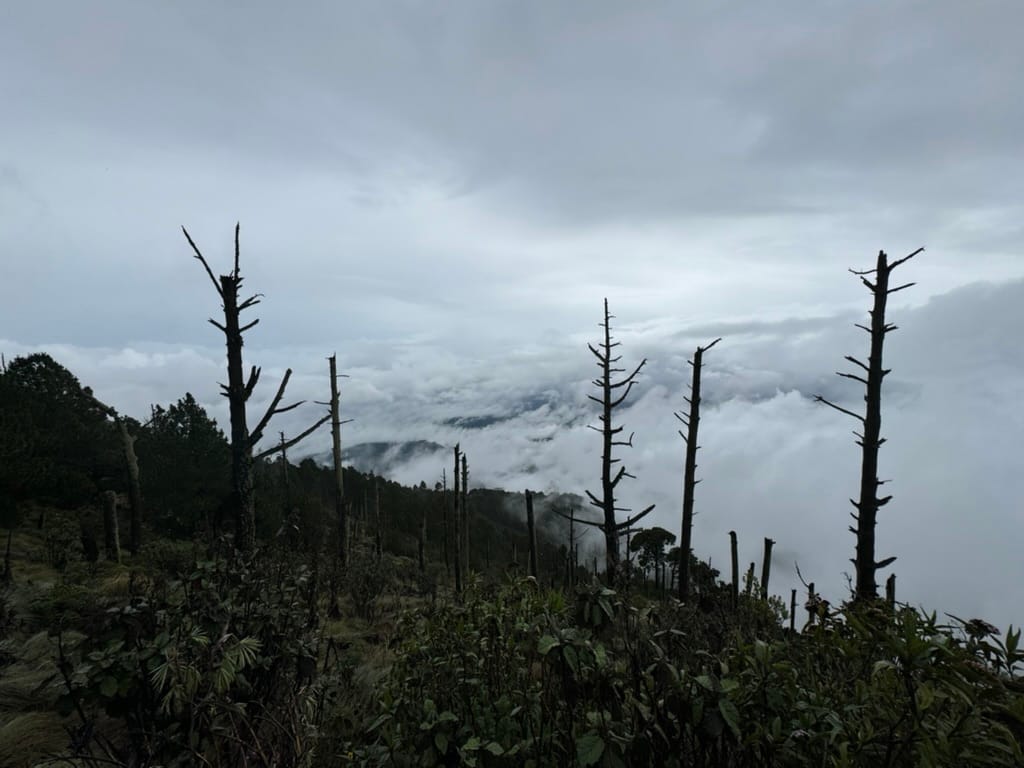A few months ago, I climbed the volcano Acatenango in Guatemala with four of my best friends. It was a disaster of a trip on so many levels, but thanks to being able to spend quality time with people I love, I had a good time. I did, however, lose my Apple Watch, AirPods, my wallet with my ID and all my credit cards, and some additional camping equipment when I accidentally kicked them off a cliff during the worst tropical rainstorm I've ever seen. It appears that Guatemalan adventures and I are developing an expensive electronics destruction habit.[1]
As soon as I regained internet, I re-ordered and re-purchased replacements for everything I lost, except the Apple Watch. My reasoning at the time was that it was silly to buy a watch in June when new ones were going to come out in September. But as September 9 approaches, I am no longer certain I'll replace my watch at all.
This surprised me because I was an Apple Watch early adopter. I woke up at 5 a.m. to place an order for the very first Series 0 watch in 2015. That piece of crap was barely fast enough to tell the time (let alone any "smart" activities), but at the same time it was absolutely amazing to have a tiny computer on my wrist. I began to rely on the watch as a notification proxy and then quickly as a health-tracking device.
My previous watch (may it rest in pieces under the landslide we narrowly avoided becoming caught in) had cellular capability, allowing me to go without my phone for walks or errands and still stay connected. I even wrote an entire blog post about traveling internationally with just a watch and no phone after my previous Guatemala fiasco.[1:1]
But living without a watch for two months has caused me to have second thoughts about buying a new one.
 |
|---|
| Great views at 3569m (11,709ft) on almost any day except the one I climbed. 😆 |
One of the two reasons why I brought the watch on the volcano was to measure my blood oxygen during the high-altitude climb and track the GPS coordinates so that I could animate my climb, matching photos and videos to the position on the volcano on a map. Neither of those features actually worked on the volcano.
Because I was climbing for 5 hours in the rain, the O2 sensor was unable to get a reading. And because I was tracking my heart rate via a workout, I put the watch in battery-saving mode. Unbeknownst to me, that disables the GPS even during workouts, and my watch did not rely on my phone's massive battery to associate GPS coordinates with the workout as I expected. This would be such a simple thing to do--Apple can detect if I'm working out and automatically start tracking it, and yet Apple didn't fall back to my phone's GPS.
Despite the hiccups from using the watch in an extreme environment, I find a lot of value in knowing my O2 levels on a day-to-day basis. However, due to Apple's legal issues with Masimo, the replacement watch I’m considering is unlikely to include the blood oxygen feature I want, and it might not be available until 2028.
As a consumer, I feel irritated that a feature I enjoyed was removed from the watch. I know patent disputes are complicated, but I paid a premium to be taken care of, and the richest company in the world can't seem to work out a solution that benefits me as a consumer here. Apple used to have my back, but now it feels like that’s no longer the case. Given how they have behaved recently with the EU and with the App Store over the last 15 years, I'm hesitant to give them the benefit of the doubt that it's not a "we don't want to lower our margins, so we'll fight it out in court" reason. But I will admit the legal system is most likely to blame here.
Another reason I'm hesitant to buy another watch is that I have noticed that I feel less distracted overall. One benefit of not having notifications on my wrist 22 hours a day[2] is that I miss a lot of notifications. If I do get a replacement watch, I'm going to disable almost all the notifications I can and use the watch primarily as a health device. Sure, the focus modes are great, and you can disable notifications for various apps, but after 9 years of watchOS, I still haven't found a solution I'm happy with.
I am also tired of paying 10-15 US Dollars a month to my carrier for the privilege of having a cellular function that I rarely ever use. I'm not convinced that the monthly cost and the additional $100+ dollars to buy the cellular model is worth the money.
So what are my next steps? After the September 9 announcement I am going to compare the latest Apple Watch to an Oura Ring. Although the Watch appears to be a better fitness tracker in every way, well... quite simply the Oura Ring has a blood oxygen sensor and costs $100 less. Its monthly subscription is half of what my watch's cellular plan, and the Oura doesn't have a screen to distract me.
Apple's strongpoint has always been hardware, and their iOS/iPad/watchOS software would benefit from a lot of quality of life improvements that don't move the stock price the way "AI" does. After all it took Apple 17 years to finally let us arrange our home screen the way we want to.
The watch may be a superior device over other fitness trackers, but I have been going against the grain trying to get Apple's software to behave the way I want it to for 9 years now. I suspect this early adopter and power user might be calling it quits on September 9.
Traveling internationally with only an Apple Watch and no phone ↩︎ ↩︎
I charged my watch twice a day for about an hour at a time after waking up and before bed. ↩︎

